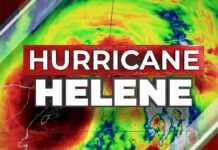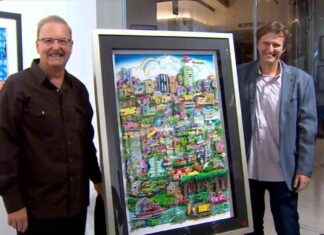In the spring of 1928, eighteen young men took part in the tests to obtain their pilot’s title at the facilities of the Real Aero Club in Madrid. It was one more of the calls that the institution, founded by Jesús Fernández Duro, had held since 1904. But on that occasion there was a surprising novelty for the time: one of the applicants to pilot an airplane was a woman.
It was something unusual. In 1906, the Frenchwoman Raymonde de Laroche (1882-1919) had obtained a pilot’s license, which had made her the first European to take the controls of an airplane. In neighboring Portugal, in turn, María de Lourdes Braga de Sá Teixeira (1907-1984) had just obtained the same permit as Laroche. However, in the conservative Spain of the twenties, the fact that a young woman belonging to the aristocracy tried to follow that path was not without causing a certain stir.
The young woman in question was called María de la Salud Bernaldo de Quirós y Bustillo. She was born in Madrid on March 26, 1898, fifth of the six children of the Marquis de los Altares, María de la Concepción Bustillo and Rafael Bernaldo de Quirós y Mier.
The premature death of her mother in 1914, giving birth to the youngest of her siblings, meant that María, as she was always known, grew up under the tutelage of her father, a cultured and progressive man who provided a complete education for both her like her brothers, although no one believed that María chose to carry out any task other than that of wife and mother.
Thus, when he was not yet twenty years old, he married his cousin, Ramón Bernaldo de Quirós y Urquijo, son of the Marquises of Argüelles, in a solemn ceremony that took place in the family palace of Los Altares, in Llanes (Asturias). ).
The couple settled in Madrid due to the Argüelles relationship with the court. A year after the wedding, their first daughter, María, was born, who died a few weeks after giving birth. It was not the only tragedy that darkened the life of the young mother: a few months later, the terrible flu that devastated Europe ended the life of her husband.
At that time, María was pregnant with her second son, Ramón, who died in 1920. It was difficult for her to recover from so much loss, but, as she confessed in a magazine of the time, she did so thanks to the company of an old acquaintance of her parents, José Manuel Sánchez Arjona y Velasco (1893-1955), mayor of the town of Ciudad Rodrigo in Salamanca, whom he married in 1922.
Her husband’s responsibilities forced her to leave Madrid and move to Ciudad Rodrigo. There, a fortuitous incident aroused her interest in aeronautics. It seems that, in March 1926, three planes heading to Valladolid from the Seville military aerodrome had to make an emergency landing in the vicinity of Ciudad Rodrigo.
The contemplation of these devices and the explanations of the pilots encouraged his passion for flying. Neither her neighbors nor her husband shared her interest. The people of Ciudad Rodrigo openly accused her of being tomboyish and accused her of being frivolous for having relationships with some renowned pilots, without thinking that her relationships were strictly professional. But nothing stopped her. Determined to obtain a license to fly, she separated from her husband and returned to Madrid in order to enroll in Aero Club courses.
María did not find any opposition to enroll: her teachers and classmates were convinced that she would not be able to pass the entrance exams. But, to everyone’s surprise, she passed the physical and intellectual requirements to access the course with flying colors, and she began her studies to obtain a pilot’s license.
The infantry captain and military airplane pilot José Rodríguez y Díaz de Lecea (1894-1967) was commissioned to train him, who, after the Civil War, would become Minister of Air Force. A personal relationship was established between the two which, in 1931, led María to become one of the first women to request (and obtain) a divorce during the Second Republic.
Convinced that María was an unusual student, Díaz de Lecea encouraged her vocation and prepared her to fly solo. Her student did it for the first time on October 7, 1928. A month later he received the title of civil airplane pilot, granted by the International Aeronautical Federation (FAI).
The media did not take long to echo what happened. They baptized her as Miss Golondrina, her nickname that, with a certain sarcasm and some machismo, her own fellow students had given her.
His figure began to become popular. Interviews in which she declared that “women are good for more than embroidery” garnered her female applause and made her the fashionable woman. She was required to take honorary rolls in soccer matches, to preside over competitions of the most varied disciplines, and even the fashionable bullfighter, Marcial Lalanda (1903-1990), claimed her presence in the charity bullfight organized in Chinchón by the magazine Motoplane, which Maria arrived at by piloting an airplane!
However, the public favor was not able to break down all the barriers. María wanted to carry out what were called “aerial baptisms”, that is, to accompany anyone who wanted to discover the pleasure of flying in her first trip by plane. It was then that she understood that not everything was going to be so easy: no man was willing to fly with her at the controls of a device. Even more so, she could not fly any Aero Club plane either, since she was not admitted as a member, simply because she was a woman.
Not even with an honorary title, since, in 1929, General Alfredo Kindelán Duany (1879-1962), at the time supervisor of Aeronautics, had rejected the petition signed by more than fifty members of the Real Aero Club requesting recognition as a member Maria’s fee He denied it on the grounds that such a distinction was only allowed for those foreign military aviators (of course, male) who had excelled in the military.
At least, it made up for her to see how her example spread among her compatriots. In January 1929, she obtained the license for Margot Soriano (1908-1991), wife of José María Ansaldo (1899-1983), also a pilot. Their passion for aviation had led them to get married in a hangar at the Cuatro Vientos aerodrome (Madrid).
She was followed, among others, by Pilar San Miguel and Martínez Campos (1920-2015), who obtained her license in 1930, or Elena Sáez, the first woman to fly a glider, in 1931, the same year that the Catalan Mari Pepa Colomer (1913-2004) obtained his license. Together with Dolors Vives Rodón (1909-2007), the latter played a valuable strategic role during the Civil War, commissioned by the Generalitat de Catalunya.
It didn’t take long for Maria to understand that if she wanted to continue flying, she had to have her own aircraft. Hence, she took advantage of the offer of the British firm De Havilland to buy a plane at half price. The contract included the obligation to tour Spain promoting that company, a leader in European aeronautics. That’s how she did it, and at each of the points along the way (San Sebastián, Vigo, Valladolid…) she was received like a star.
His career did not end there. During the Second Republic, María worked as a flight instructor in Asturias, and, thanks to the transfer by the Naval Aviation of an aircraft stationed in Getafe, she continued to carry out aerial baptisms, as well as getting involved in activities such as bustard hunting.
The start of the Civil War interrupted his career. A follower of the rebellious side, like Díaz de Lecea, she carried out some reconnaissance flights at the beginning of the war for the national forces, although they were sporadic actions that, in fact, put an end to her life as a pilot.
At the end of the war, he established his residence in Madrid in the company of Díaz de Lecea, with whom he never married, since the dictatorship invalidated his divorce with Sánchez Arjona. Lecea died in 1967; María, in 1983. By then, no one remembered the feat of a woman who, in order to cross the skies, had not hesitated to break the mold.








